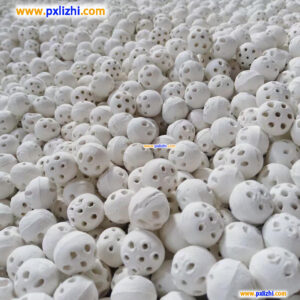
# Alumina Cerical Ball Applications and Properties
## Introduction to Alumina Ceramic Balls
Alumina ceramic balls are high-performance industrial components made from aluminum oxide (Al₂O₃). These balls are known for their exceptional hardness, wear resistance, and thermal stability, making them suitable for various demanding applications across multiple industries.
## Key Properties of Alumina Ceramic Balls
### 1. High Hardness
With a Mohs hardness of 9, alumina ceramic balls are among the hardest materials available, second only to diamond.
### 2. Excellent Wear Resistance
The dense microstructure of alumina ceramic provides outstanding resistance to abrasion, significantly outperforming steel in many applications.
### 3. Thermal Stability
These balls maintain their structural integrity at temperatures up to 1,600°C (2,912°F), making them ideal for high-temperature environments.
### 4. Chemical Inertness
Alumina ceramic is highly resistant to most acids, alkalis, and organic solvents, ensuring long-term performance in corrosive environments.
### 5. Electrical Insulation
The material offers excellent dielectric properties, with high electrical resistivity even at elevated temperatures.
## Common Applications of Alumina Ceramic Balls
### 1. Grinding Media
Alumina ceramic balls are widely used as grinding media in ball mills for:
- Ceramic raw material processing
- Mineral processing
- Paint and pigment production
- Pharmaceutical applications
### 2. Bearing Components
Their hardness and wear resistance make them ideal for:
- Precision bearings in high-speed applications
- Corrosive environment bearings
- High-temperature bearing systems
### 3. Valve Components
Alumina balls serve as excellent valve components due to their:
- Chemical resistance in aggressive media
- Wear resistance in abrasive fluids
- Long service life in demanding conditions
### 4. Catalyst Supports
In chemical processing, alumina balls are used as:
- Catalyst carriers in petrochemical industries
- Support media in reactor beds
- Inert packing material in distillation columns
## Grades and Specifications
Alumina ceramic balls are available in different purity grades:
| Grade | Al₂O₃ Content | Typical Applications |
|---|---|---|
| 90% | 90% | General purpose grinding, valve components |
| 95% | 95% | Higher wear resistance applications |
| 99% | 99% | Ultra-high purity applications, semiconductor |
## Advantages Over Metal Balls
Compared to traditional metal balls, alumina ceramic balls offer:
- 50-70% lighter weight
- 3-5 times longer service life
- No metal contamination in processed materials
- Lower energy consumption in grinding applications
- Better performance in corrosive environments
## Conclusion
Alumina ceramic balls represent